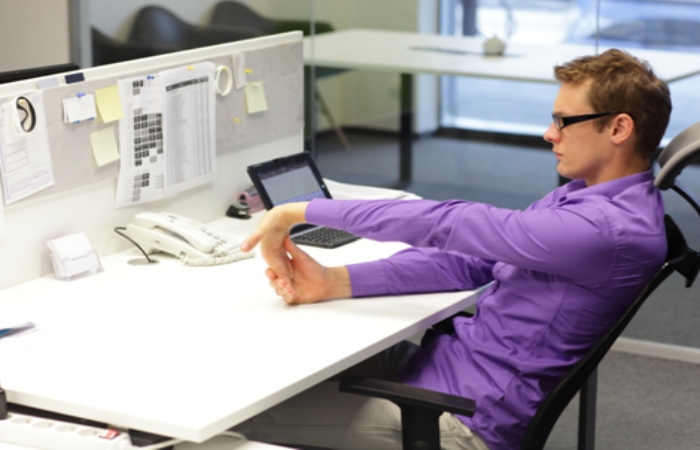Don’t you wish you could zip back to the past and try to explain to your younger self to take those afternoon naps you fought so hard against? As an adult regularly plagued by midday slumps, you long for the days when you could peacefully drift off to dreamland for an hour or two each day after lunch. Instead, you’re left yawning through whatever work or task you have in front of you. In this article, we’ll give you ten ways to beat that midday slump and restore your energy. We’ll explore everything from proper sleep hygiene to natural supplements like CBD drops and essential oils. But before we get started, it’s a good idea to understand why afternoon slumps are even a thing.
Table of Contents
Causes of Afternoon Slumps
First, let’s take a quick look at why you’re dealing with those afternoon slumps. According to the Sleep Foundation, a significant factor could be issues in two systems in your body: your sleep/wake homeostasis and your circadian rhythm. Sleep/wake homeostasis balances the needs for sleep and wakefulness, while the circadian rhythm is affected by environmental cues. Sleepiness due to the latter comes on most heavily after midnight and during that dreaded midday slump.
Poor eating and hydration habits can also have a substantial effect on how you’re feeling in the afternoon. For example, if your lunch is filled with poor food choices, you might find your blood sugar spiking and then dropping afterward. Likewise, a lack of water throughout the day will leave you with lowered cognitive skills and feeling drowsy.
The impact of daily stress can also take its toll, as can increasing sleep deficits. These will both leave you reaching for your pillow instead of tackling the next job to cross your desk. And, last, there are some metabolic disorders that you need to be aware of that may affect general alertness and sleepiness, such as being pre-diabetic, insulin disorders, and hypoglycemia. Again, treatment of these should be undertaken with the help of a qualified healthcare professional.
Ways to Slay the Slump
1. Sleep Properly
Improving your sleep cycles and general sleep hygiene will go a long way to ensuring you’re not overly tired the next day. This way, even if you are hit with a case of the afternoon yawns, you’ll be able to bounce back more easily. A proper wind-down and bedtime routine that includes shutting off screens 30 minutes to an hour before it’s time to call it a night is a great start. And if you still have trouble drifting off, try using something like CBD oil or melatonin for that extra push into dreamland.
2. Tackle Underlying Medical Issues
This can be a challenging, long road, but overall, it’s definitely worth it. When you work with your doctor to address your medical issues, you’ll be seeing tons of benefits. They may directly affect your midday wakefulness by leveling out blood sugar levels, for example. Or they may indirectly do so by letting you sleep better the night before. Regardless, it’s worth the time and effort if you can avoid slumping over every afternoon.
3. Move!
Too many of us are strapped to our desks. We come in, sit down and never move. Some of us even eat lunch at our desks. This is not healthy! Every 30 to 45 minutes, you should be getting up and moving around your workplace. This will increase blood flow and promote wakefulness. If you can, also get out for a walk!
4. Isometric Exercises
These are exercises that involve no movement. They’re a static contraction of a single muscle or group of muscles with no moving of joints. Simple exercises like chair leg extensions, hand presses and side-bends can all comfortably be done in an office setting without making your co-workers think you’re too much of a weirdo. While they won’t get the blood pumping as much as bench pressing and back-loaded squats might, they’ll still remind your body that it’s time to be awake.

5. Desk Yoga/Stretching
Along the same lines as isometric exercises, you can introduce other forms of light exercise and movement into your afternoon by doing a little desk yoga or additional stretching. When combined with proper breathing, you’ll not only be getting the blood circulating but also introducing much-needed oxygen into your system that your body will thank you for.
6. Plan Regular Work/Break Periods
Plan regular breaks throughout your day, especially during the morning before you take your lunch. Then, you’ll have more in the reserves for the afternoon. One popular way of doing this is the Pomodoro method, where you work for 25 minutes and take short 5-minute breaks. Then, you can use those five minutes to grab a snack, head to the bathroom or incorporate some of the movement recommendations we’ve already made.
7. Plan Your Lunches … and Snacks!
Ensure that your lunches are protein-rich and include enough complex carbohydrates and healthy fats to deliver the energy you need to stay alert. But you should also plan for your snacks. Often when we hit a slump, adding a bit of fuel to our system will help. Of course, if you’re reaching for junk food, you’ll pay the price with more fatigue later on. But another quick blast of protein may just be what the doctor ordered.
8. Hydrate
Chugging some ice-cold water is an excellent way to shock your system into wakefulness. This happens because that icy hit stimulates your body into producing adrenaline, which can bring you out of a midday slump without any problem whatsoever.

But What About Caffeine?
Yeah, caffeine remains an old standby for many. The problem is that regular caffeine use can be habit-forming, so you may not function without it. Then, if you run into a situation where it’s not around, you’ll be at the mercy of your midday slump. Many caffeinated beverages are spiked with sugar. Unfortunately, as we’ve already learned, this isn’t a good thing because you’ll just crash harder later on. If you absolutely must choose caffeine, opt for black coffee, unsweetened black tea or plain matcha.

